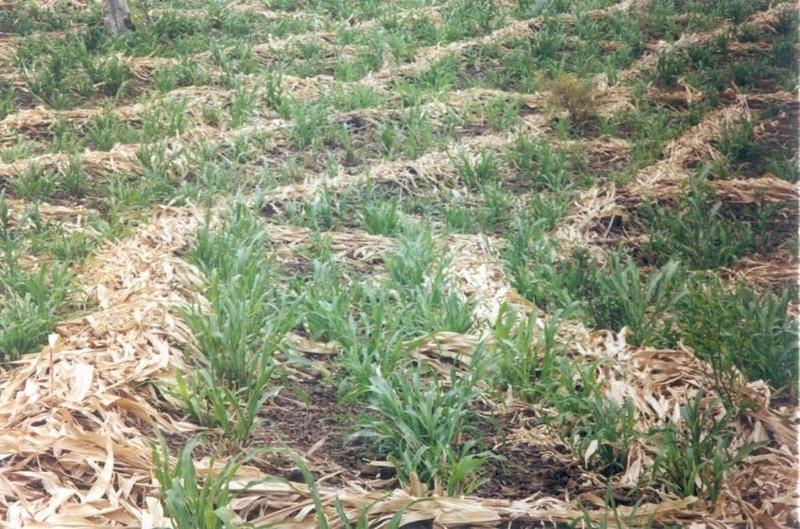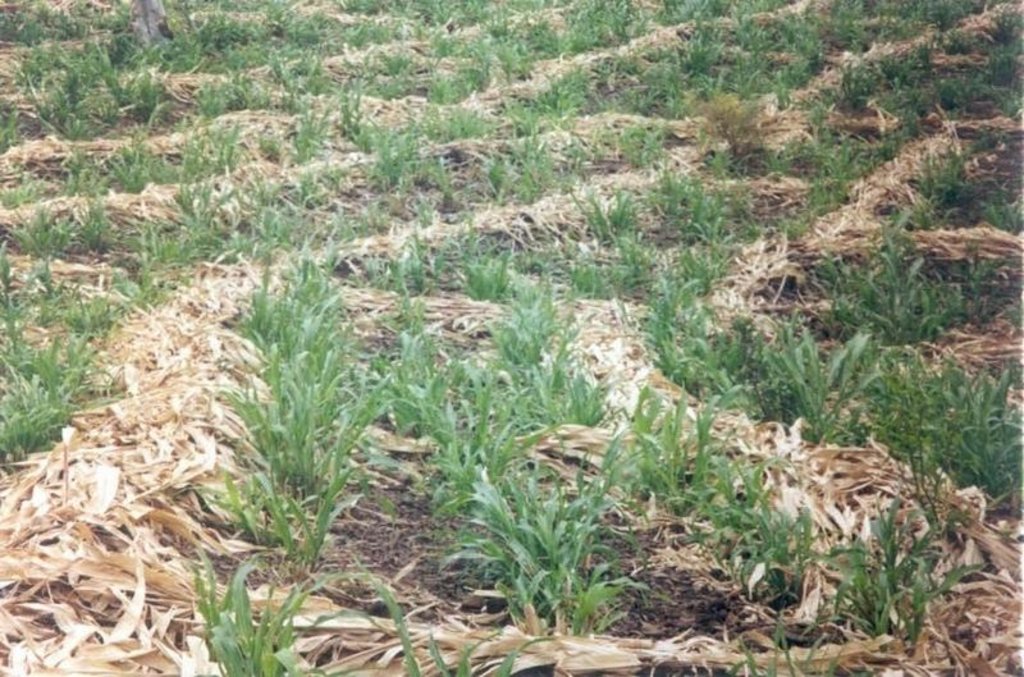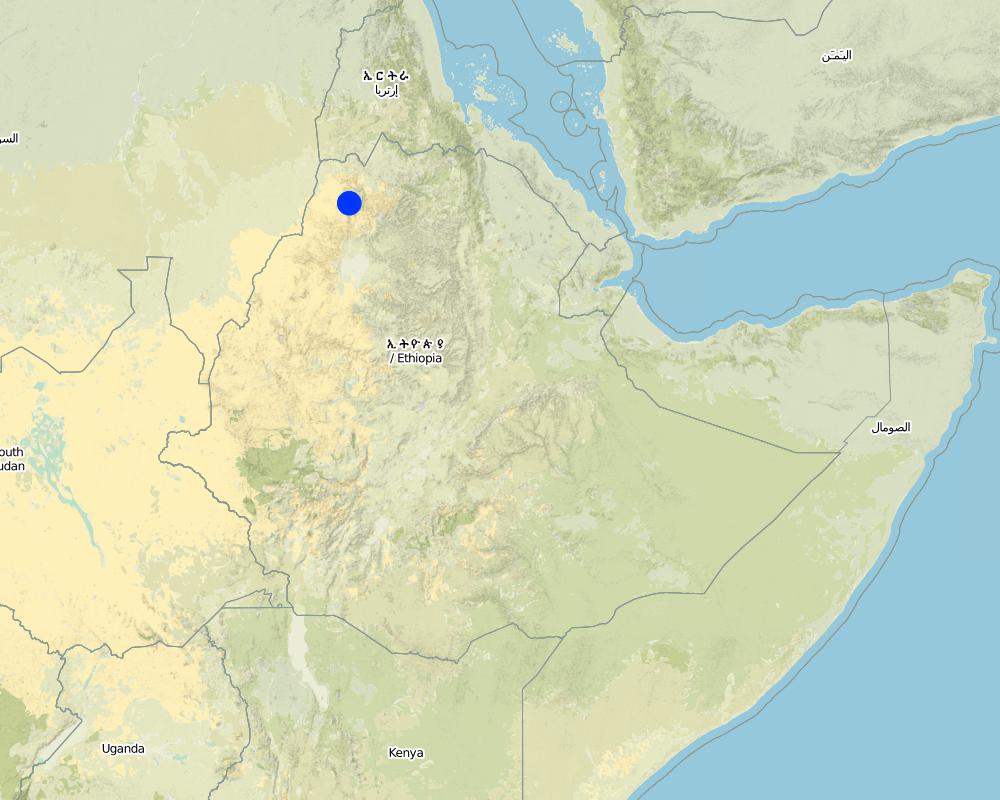Trashlines [埃塞俄比亚]
- 创建:
- 更新:
- 编制者: Daniel Danano Dale
- 编辑者: –
- 审查者: Alexandra Gavilano
technologies_974 - 埃塞俄比亚
查看章节
全部展开 全部收起1. 一般信息
1.3 关于使用通过WOCAT记录的数据的条件
编制者和关键资源人员接受有关使用通过WOCAT记录数据的条件。:
是
2. SLM技术的说明
2.1 技术简介
技术定义:
Trashlines are constructed as a barrier of runoff, soil erosion using maize, sorghum and teff straw/stalk
2.2 技术的详细说明
说明:
Trashlines are formed of sorghum, maize or teff straw placed in to form a rectangular basin. The main lines are constructed along the contour. The technique is multi purposive I.e. water harvesting, soil trapping, physical obstraction and improve soil fertility. The estabilishment is made by collecting the straws and then spread it on contour lines. The environment in relation to the technique is low and erratic forms of rainfall, high evapotranspiration, availability of straw.
2.3 技术照片
2.5 已应用该技术的、本评估所涵盖的国家/地区/地点
国家:
埃塞俄比亚
区域/州/省:
Southern Nation & Nationalities Peoples Region
Map
×2.6 实施日期
如果不知道确切的年份,请说明大概的日期:
- 50多年前(传统)
2.7 技术介绍
详细说明该技术是如何引入的:
- 作为传统系统的一部分(> 50 年)
注释(项目类型等):
It is traditional technique practiced since long time
3. SLM技术的分类
3.2 应用该技术的当前土地利用类型

农田
- 一年一作
年作 - 具体指明作物:
- 谷物类 - 玉米
- 谷类 - 高粱
- 豆科牧草和豆类 - 豆子
- teff
每年的生长季节数:
- 2
具体说明:
Longest growing period in days: 135 Longest growing period from month to month: Feb - Jun Second longest growing period in days: 105Second longest growing period from month to month: Jul - Nov
注释:
Major land use problems (compiler’s opinion): steep slope farming
Major land use problems (land users’ perception): Pest, disease and land shortage
Type of cropping system and major crops comments: Sorghum - Maize - Beans
3.4 供水
该技术所应用土地的供水:
- 雨养
注释:
Water supply: Also post-flooding
3.5 该技术所属的SLM组
- 改良的地面/植被覆盖
- 横坡措施
3.6 包含该技术的可持续土地管理措施

农艺措施
- A1:植被和土壤覆盖层
- A2:有机质/土壤肥力
注释:
Main measures: agronomic measures
Type of agronomic measures: temporary trashlines, contour tillage
3.7 该技术强调的主要土地退化类型

土壤水蚀
- Wt:表土流失/地表侵蚀

化学性土壤退化
- Cn:肥力下降和有机质含量下降(非侵蚀所致)

水质恶化
- Ha:干旱化
注释:
Main type of degradation addressed: Wt: loss of topsoil / surface erosion
Secondary types of degradation addressed: Cn: fertility decline and reduced organic matter content, Ha: aridification
4. 技术规范、实施活动、投入和成本
4.1 该技术的技术图纸
技术规范(与技术图纸相关):
Technical knowledge required for land users: high
Main technical functions: water harvesting / increase water supply
Secondary technical functions: increase / maintain water stored in soil
Temporary trashlines
Material/ species: Sorghum, Maize & Teff Straw/stalk
Remarks: Rectangular basin
If the original slope has changed as a result of the Technology, the slope today is (see figure below): 3.00%
Gradient along the rows / strips: 0.00%
Slope (which determines the spacing indicated above): 4%
If the original slope has changed as a result of the Technology, the slope today is: 3%
Lateral gradient along the structure: 1%
4.2 有关投入和成本计算的一般信息
其它/国家货币(具体说明):
Ethiopian birr
如相关,注明美元与当地货币的汇率(例如1美元=79.9巴西雷亚尔):1美元=:
8.5
4.5 维护/经常性活动
| 活动 | 时间/频率 | |
|---|---|---|
| 1. | Collection of straw | Dry season / annual |
| 2. | Placing the straw on a line | Dry season / annual |
4.6 维护/经常性活动所需要的费用和投入(每年)
注释:
labour and tools
4.7 影响成本的最重要因素
描述影响成本的最决定性因素:
soil type
5. 自然和人文环境
5.1 气候
年降雨量
- < 250毫米
- 251-500毫米
- 501-750毫米
- 751-1,000毫米
- 1,001-1,500毫米
- 1,501-2,000毫米
- 2,001-3,000毫米
- 3,001-4,000毫米
- > 4,000毫米
农业气候带
- 半干旱
5.2 地形
平均坡度:
- 水平(0-2%)
- 缓降(3-5%)
- 平缓(6-10%)
- 滚坡(11-15%)
- 崎岖(16-30%)
- 陡峭(31-60%)
- 非常陡峭(>60%)
地形:
- 高原/平原
- 山脊
- 山坡
- 山地斜坡
- 麓坡
- 谷底
垂直分布带:
- 0-100 m a.s.l.
- 101-500 m a.s.l.
- 501-1,000 m a.s.l.
- 1,001-1,500 m a.s.l.
- 1,501-2,000 m a.s.l.
- 2,001-2,500 m a.s.l.
- 2,501-3,000 m a.s.l.
- 3,001-4,000 m a.s.l.
- > 4,000 m a.s.l.
5.3 土壤
平均土层深度:
- 非常浅(0-20厘米)
- 浅(21-50厘米)
- 中等深度(51-80厘米)
- 深(81-120厘米)
- 非常深(> 120厘米)
土壤质地(表土):
- 中粒(壤土、粉土)
表土有机质:
- 中(1-3%)
- 低(<1%)
如有可能,附上完整的土壤描述或具体说明可用的信息,例如土壤类型、土壤酸碱度、阳离子交换能力、氮、盐度等。:
Soil fertility is medium-low
Soil drainage/infiltration is good-medium
Soil water storage capacity is high-medium
5.6 应用该技术的土地使用者的特征
相对财富水平:
- 贫瘠
- 平均水平
机械化水平:
- 手工作业
说明土地使用者的其他有关特征:
Annual population growth: 2% - 3%
50% of the land users are average wealthy and own 65% of the land.
40% of the land users are poor and own 30% of the land.
10% of the land users are poor and own 5% of the land.
5.8 土地所有权、土地使用权和水使用权
土地所有权:
- 州
土地使用权:
- 个人
6. 影响和结论性说明
6.4 成本效益分析
技术收益与技术建立成本相比如何(从土地使用者的角度看)?
短期回报:
积极
长期回报:
积极
技术收益与技术维护成本/经常性成本相比如何(从土地使用者的角度看)?
短期回报:
积极
长期回报:
积极
6.5 技术采用
在所有采用这项技术的人当中,有多少人是自发的,即未获得任何物质奖励/付款?:
- 91-100%
注释:
Comments on acceptance with external material support: estimates
100% of land user families have adopted the Technology without any external material support
Comments on spontaneous adoption: estimates
There is a moderate trend towards spontaneous adoption of the Technology
7. 参考和链接
7.1 信息的方法/来源
链接和模块
全部展开 全部收起链接
无链接
模块
无模块




